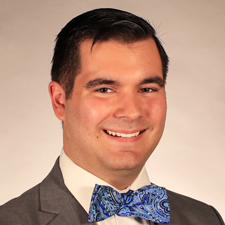What Puerto Rico’s New Education Reform Bill Says About School Choice
The past few weeks have been a whirlwind for education in Puerto Rico.
On April 30, U.S. Secretary of Education Betsy DeVos announced a $589 million congressional package to aid Puerto Rico’s Department of Education following the destruction of Hurricanes Irma and Maria. Then, thousands of protestors—including a large contingent of teachers—demonstrated in May Day protests.
The source of the turmoil: austerity and reform.
The Puerto Rican government enacted an island-wide education reform law that would allow for the creation of charter schools and school vouchers, the former beginning in the coming school year and the latter launching in 2018–19. It also declared it would make changes to public pensions and permanently close 283 schools across the island because of storm damage and steep enrollment drops that happened when thousands of students fled the hurricanes last year. The Department of Education dropped that number to 266 last week after hearing concerns from teachers and community leaders.
Even before last year’s devastating storms, Puerto Rico had been hemorrhaging students.
In 2007, Puerto Rico had roughly 1,500 schools and half a million students. In the years that followed, a crippling recession drove an average of 20,000 students per year (and many of their families) away from Puerto Rico—mostly to the U.S. mainland. Today, the island’s single-district education system is down to 322,000 students, after beginning the school year with roughly 360,000.
With new circumstances come new strategies. Puerto Rico’s Education Secretary Julia Keleher saw a need for education reform and spearheaded these major changes, including the first raise Puerto Rico’s teachers have received in a decade. Though the island will forge its own path to improvement, it is attempting to take lessons from education reform efforts in cities and states on the mainland. Major components of the legislation include updating her department and allowing more control at the local level for schools.
The bill also allows parents to have more control of their children’s educational experiences. Here’s what the legislation says about what Puerto Rico’s potential new voucher program can do.
Student Funding
Puerto Rico’s Department of Education allocated roughly $6,400 per student before Irma and Maria. That’s on the low end compared to what other states allocate, and Puerto Rico’s school system doesn’t take in the same level of local funds that make up a large share of mainland public school funding. It also pales in comparison to the total amount of funds students receive in districts like New York City, Miami and Montgomery County, Maryland, where a large number of Puerto Rican families are flocking.
Under the new education law, vouchers for private schools may not exceed 70 percent of that amount— which could be approximately $4,480 based off recent data. For added context, vouchers for intradistrict public school choice, a key component of the school choice section, can be worth 50 percent more than private school vouchers. The program also allows gifted high school students, whether they attend public or private schools, to take courses at universities as part of their secondary school enrollment.
Student Eligibility
Students must first be enrolled in public or charter schools for two years prior to qualifying for a private school voucher, meaning students may join the program in the second grade at the earliest. Because participation in the program is capped, Puerto Rico’s legislature prioritized in their voucher criteria low-income students, students adopted or in foster care, students who are victims of bullying or sexual harassment and gifted students. The Puerto Rico Department of Education has yet to clarify exactly how those students will be prioritized. Notably, almost half of all Puerto Ricans meet the federal definitions of “poverty.”
Other Rules and Regulations
- Total program enrollment is capped at 3 percent of Puerto Rico’s total student population— approximately 9,600 students based off recent enrollment data—during the first year, although that can rise to 5 percent in later years.
- All students participating in the program must demonstrate satisfactory academic progress and/or a considerable improvement in their cognitive skills in order to retain eligibility.
- No more than 2 percent of the program’s budget may be used for administrative purposes.
It’s important to note that the island’s Department of Education has a lot of discretion in its roll-out and administration of the voucher program. Issues like the number of vouchers, funding mechanisms, regulations and program evaluation are still to be determined.
To most, Puerto Rico’s predicament, especially in education, is less than ideal. With system-wide debt, lagging test scores and an outdated bureaucracy, that was true even before Maria. But, as Secretary Keleher has recognized, education reform and school choice on the island can help build the framework for future success.
“We’re not looking to go crazy,” Keleher said in February, when the reform legislation was being introduced. “This is super important: I’m not privatizing education. It’s not New Orleans all over again. I have no intention of creating union issues. But what I do think is fair for kids is to give them more options.”
Stay current as Puerto Rico’s school choice program continues to develop. Follow EdChoice on Twitter @EdChoice or sign up for our email updates at the bottom of this page.




